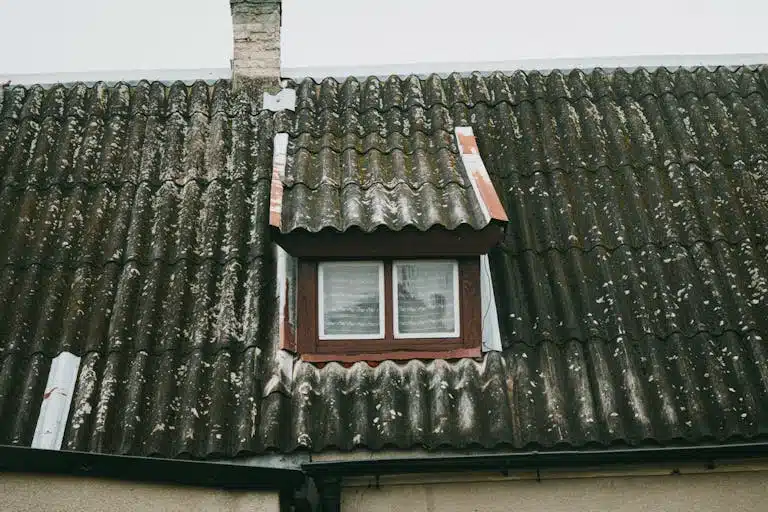Asbestos, once a widely used material in UK construction for its durability and fire-resistant properties, is now recognised as a major health hazard. Workers in construction, maintenance, demolition, and related trades, particularly those working in buildings constructed before 2000, face significant risks of exposure to asbestos-containing materials (ACMs). Among the most severe consequences is mesothelioma, a deadly cancer directly linked to asbestos. This comprehensive guide explores the nature of asbestos, its health impacts, common exposure sources, legal protections, and preventive measures for UK workers, empowering them to stay informed and safe.
What is Asbestos and How Does it Cause Mesothelioma?
Asbestos is a group of naturally occurring silicate minerals, valued for their heat resistance and strength, used extensively in UK construction until its complete ban in 1999. Found in materials like insulation, roofing sheets, floor tiles, and pipe lagging, asbestos becomes dangerous when disturbed, releasing microscopic fibres into the air. When inhaled, these fibres lodge in the lungs or other tissues, causing inflammation and scarring that can lead to serious diseases.
Mesothelioma, a rare and aggressive cancer, primarily affects the pleura (lung lining) or peritoneum (abdominal lining). It is almost exclusively caused by asbestos exposure, with symptoms like chest pain, shortness of breath, or abdominal swelling often appearing 20–50 years after initial exposure. This long latency period makes early awareness critical, as workers may not realise they’ve been exposed until decades later. The Health and Safety Executive (HSE) estimates over 2,500 new mesothelioma cases annually in the UK, with a total of over 5,000 asbestos-related deaths, including lung cancer and asbestosis. For detailed information, visit Mesothelioma UK or Cancer Research UK.
Health Impacts Beyond Mesothelioma
Asbestos exposure poses multiple health risks beyond mesothelioma. Asbestosis, a chronic lung condition, results from prolonged inhalation of asbestos fibres, leading to lung scarring and severe breathing difficulties. Asbestos-related lung cancer is another significant risk, particularly for smokers, as the combination of smoking and asbestos exposure dramatically increases cancer likelihood. Other conditions, such as pleural thickening and pleural plaques, can also impair lung function. These diseases disproportionately affect workers in high-risk trades like construction, plumbing, electrical work, and demolition. The HSE provides detailed health risk information at HSE Asbestos Health Risks.
Did You Know? The UK has one of the highest mesothelioma rates globally due to its historical reliance on asbestos in construction, particularly from the 1950s to 1980s.
Where is Asbestos Found in the UK?
Asbestos remains prevalent in UK buildings constructed or refurbished before 2000, including schools, hospitals, offices, and residential properties. Common ACMs include:
- Insulation Materials: Used in pipes, boilers, lofts, and ductwork for thermal and acoustic insulation.
- Asbestos Cement: Found in roofing sheets, gutters, downpipes, and water tanks.
- Textured Coatings: Applied as decorative finishes (e.g., Artex) on walls and ceilings.
- Floor Tiles and Vinyl: Common in older commercial and residential buildings.
- Roofing and Cladding: Used in corrugated sheets and exterior panels.
Workers may encounter these materials during renovations, repairs, or demolitions, particularly in older structures. Disturbing ACMs without precautions can release fibres, posing immediate risks. For guidance on identifying asbestos, see HSE Asbestos Essentials.
Legal Protections for UK Workers
The **Control of Asbestos Regulations 2012** sets strict guidelines to protect workers from asbestos exposure. Employers must identify potential ACMs, assess risks, and implement control measures before work begins in older buildings. Workers have a right to information about asbestos risks on their sites and must be equipped to avoid disturbance. The regulations also require employers to provide adequate information, instruction, and training for those at risk of exposure, ensuring compliance and safety. Non-compliance can lead to hefty fines or legal action. Learn more at HSE Asbestos Regulations.
Preventing Asbestos Exposure
Preventing asbestos exposure requires vigilance and knowledge. Workers should:
- Assume Asbestos Presence: Treat suspect materials in pre-2000 buildings as asbestos-containing until tested by professionals.
- Avoid Disturbance: Refrain from drilling, cutting, sanding, or breaking materials that may contain asbestos.
- Use Protective Measures: Wear appropriate personal protective equipment (PPE) when working in high-risk areas.
- Consult Specialists: Stop work and contact licensed asbestos professionals if ACMs are suspected.
- Stay Informed: Regularly review resources from trusted organisations like UKATA to stay updated on asbestos risks.
These steps help minimise exposure risks and protect long-term health. For additional resources, visit UKATA.
Support for Those Affected by Mesothelioma
For workers diagnosed with mesothelioma or other asbestos-related diseases, support is available. Mesothelioma UK offers patient resources, including information on treatment options and clinical trials. Organisations like Cancer Research UK provide guidance on coping with a diagnosis and accessing care. Workers may also be eligible for compensation through schemes like the Diffuse Mesothelioma Payment Scheme for those exposed in the workplace. Early diagnosis and medical support are crucial for improving outcomes. Explore support options at Mesothelioma UK Support.
Staying Informed About Asbestos Risks
Given the long latency of asbestos-related diseases, staying informed is essential for workers in at-risk industries. Regularly reviewing updates from the HSE, UKATA, and health organisations ensures awareness of new risks and regulations. Workers in construction, maintenance, or demolition should prioritise understanding asbestos hazards to protect themselves and colleagues, particularly as older buildings continue to pose risks during renovations.
Skilltopia’s Asbestos Awareness Course
For workers seeking to deepen their understanding of asbestos risks, Skilltopia offers an Asbestos Awareness Category A Course. Certified by The CPD Service and audited by the IATP, this online course costs £15 plus VAT and provides flexible learning to meet UK regulations. Upon completion, participants earn a CPD certificate, enhancing their safety credentials. Visit Skilltopia to learn more.





